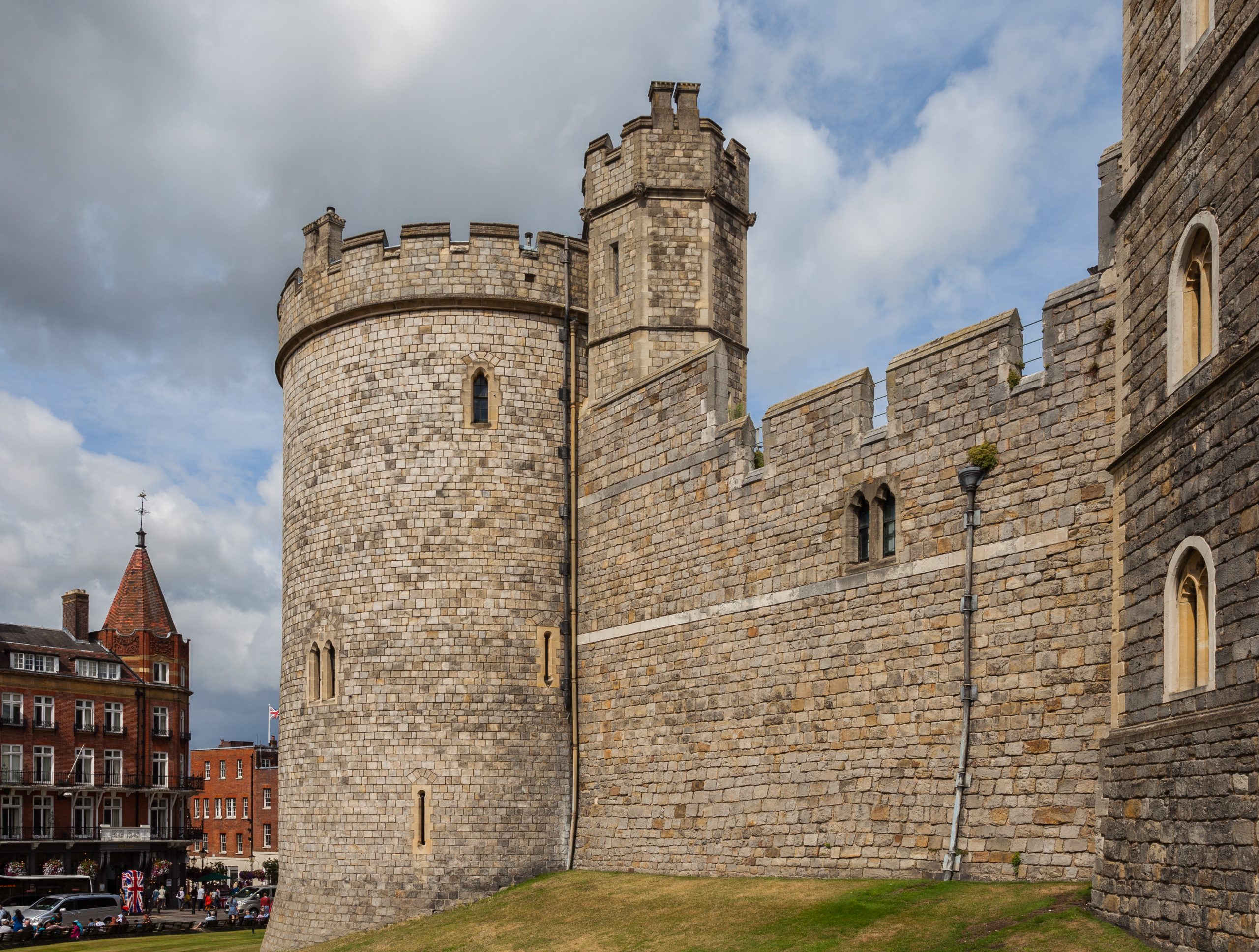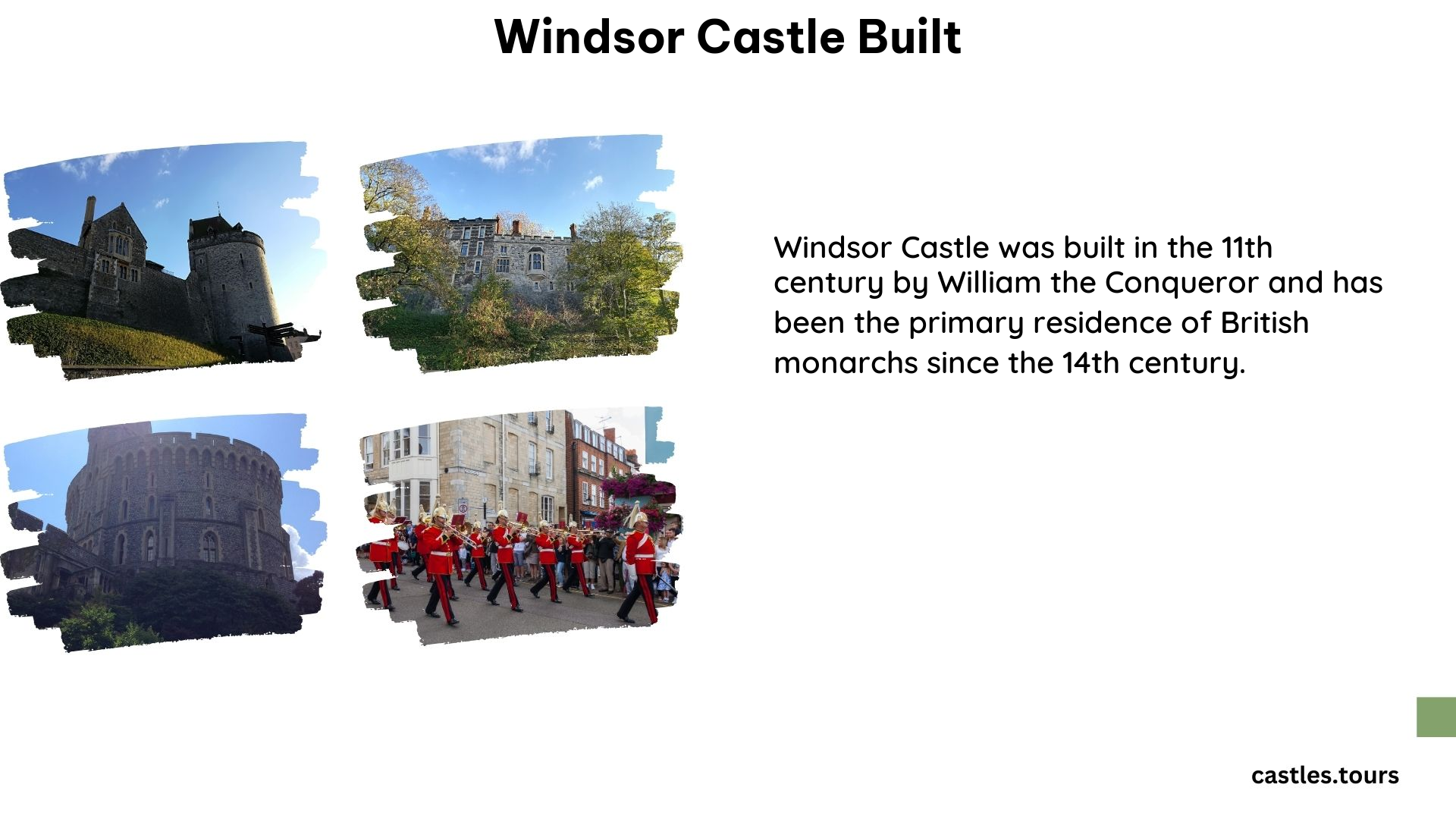Windsor Castle, a true architectural masterpiece, stands as a testament to the rich history and enduring legacy of the British monarchy. This iconic fortress, nestled in the heart of Berkshire, has been a royal residence for over a millennium, serving as a symbol of power, grandeur, and resilience.
The Origins of Windsor Castle

The construction of Windsor Castle began in 1070, just four years after the Norman Conquest of England by William the Conqueror. Initially, the castle was built as a motte-and-bailey fortification, with a wooden keep atop a man-made mound, or motte. This design was a common defensive strategy employed by the Normans to establish their control over the conquered territory.
Over the next several decades, the castle underwent a series of transformations, with the wooden keep eventually being replaced by stone walls and towers. The most significant architectural changes occurred during the reign of King Henry II (1154-1189), who transformed the castle into a grand palace, befitting the status of the English monarchy.
The Architectural Evolution of Windsor Castle

Throughout its long history, Windsor Castle has undergone numerous renovations and expansions, each reflecting the changing tastes and needs of the royal occupants. The castle’s architectural style is a harmonious blend of various periods, showcasing the evolution of English architecture over the centuries.
The Norman Era
The earliest phase of Windsor Castle’s construction, during the Norman era, is characterized by the motte-and-bailey design. The motte, a man-made mound, served as the foundation for the wooden keep, while the bailey, a fortified courtyard, provided additional living and defensive spaces.
The Plantagenet Period
Under the Plantagenet dynasty, the castle underwent significant transformations. King Henry II, known for his ambitious building projects, oversaw the replacement of the wooden keep with a more substantial stone structure. This transition from a primarily defensive structure to a palatial residence marked a significant shift in the castle’s purpose and design.
The Tudor Era
The Tudor monarchs, particularly Henry VIII and Elizabeth I, left their mark on Windsor Castle. They commissioned extensive renovations and additions, including the construction of the magnificent St. George’s Chapel, which remains one of the castle’s most iconic features.
The Georgian and Victorian Eras
In the 18th and 19th centuries, Windsor Castle underwent further modifications to accommodate the changing needs and preferences of the royal family. The Georgian and Victorian eras saw the addition of new wings, the refurbishment of existing structures, and the incorporation of the latest architectural styles.
The Grandeur of Windsor Castle’s Interior
Beyond its impressive exterior, Windsor Castle boasts an equally magnificent interior, showcasing the wealth, power, and artistic sensibilities of the British monarchy. The castle’s state apartments, private royal residences, and ceremonial halls are adorned with priceless works of art, exquisite furnishings, and intricate architectural details.
The State Apartments
The State Apartments, open to the public, are a true highlight of any visit to Windsor Castle. These grand rooms, used for official state functions and royal receptions, are adorned with opulent decor, including ornate ceilings, intricate tapestries, and lavish chandeliers.
The Private Royal Residences
While the State Apartments are open to visitors, the private royal residences within Windsor Castle remain off-limits to the general public. These areas, such as the Queen’s Apartments and the Duke of Edinburgh’s Suite, offer a glimpse into the personal lives and preferences of the royal family.
The St. George’s Chapel
One of the most iconic features of Windsor Castle is the magnificent St. George’s Chapel, a stunning example of Gothic architecture. This sacred space has served as the site of numerous royal weddings, funerals, and other important ceremonies throughout the centuries.
The Role of Windsor Castle in British History
Windsor Castle has played a pivotal role in the history of the British monarchy and the nation as a whole. It has witnessed the coronations, weddings, and funerals of countless monarchs, as well as the signing of important political documents and the hosting of state visits.
The Castle’s Wartime Role
During times of conflict, Windsor Castle has served as a refuge and a strategic military outpost. During the two World Wars, the castle was used as a safe haven for the royal family and as a hospital for wounded soldiers.
The Castle’s Symbolic Significance
Beyond its historical significance, Windsor Castle holds a deep symbolic meaning for the British people. It represents the enduring strength and resilience of the monarchy, as well as the nation’s rich cultural heritage and architectural legacy.
Visiting Windsor Castle
Today, Windsor Castle remains an active royal residence and a popular tourist destination, attracting millions of visitors each year. Visitors can explore the castle’s stunning state apartments, the magnificent St. George’s Chapel, and the beautiful castle grounds, all while immersing themselves in the rich history and grandeur of this iconic landmark.
Conclusion
Windsor Castle, with its over 1,000-year-old history, stands as a testament to the enduring legacy of the British monarchy and the evolution of English architecture. From its humble beginnings as a motte-and-bailey fortification to its current status as a grand palace and a symbol of national pride, this majestic castle continues to captivate and inspire visitors from around the world.
